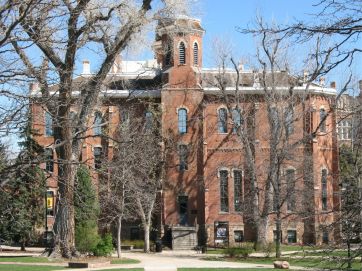Here is arguably the most startling statistic you have heard this year: It is likely that there are at least as many adult Americans with student-loan debts outstanding as there are living bachelor’s degree recipients who ever took out student loans. That’s right: as many debtors as degree holders! How can that be? First, huge numbers of those borrowing money never graduate from college. Second, many who borrow are not in baccalaureate degree programs. Three, people take forever to pay their loans back.
Let’s do the math. Recent data suggest there are about 40 million holders of student-loan debt. The New York Fed in a study puts the number a little lower, but estimates by the Consumer Financial Protection Bureau (CFPB) suggest a somewhat higher figure. There are, give or take a million, roughly 60 million college graduates. Yet a good proportion, somewhere around one-third, of college graduates, never borrowed money to go to college (that is probably doubly true of graduates in the early 1990s). In other words, at most 40 million adults with four-year degrees borrowed money. Bottom line: an awful lot of people borrow to go to college and never graduate, and/or take forever to pay off their student loans.
Before getting to the Fed study, I think individuals risk being over their head when their loan debt exceeds their annual income. Take a former student with a $50,000 debt with a $40,000 income. While the future interest rate on student loans is uncertain let us assume one of 5 percent, lower than what the law for the next fiscal year requires but more than President Obama wants. A person with a $40,000 income might have only $28,000 of what the Feds define as discretionary income. Devoting 10 percent of that income to debt servicing (the maximum required under an executive order), a debtor would pay $2,800 annually in debt service, $2,500 of which would go for interest, and only $300 for principal. Since federal policy puts a 20-year time limit on repayment, and it is likely it might take more than 20 years to repay the loan, it likely will never be fully repaid—the government will take a hit. When the debt-income ratio is under one, that is much less likely to occur. My wife, a retired guidance counselor, talked to a former student of hers recently with a six-digit debt incurred while in undergraduate and law school that is perhaps three times her income, and she literally has health problems from worrying about the crushing burden. This is not rare these days.
The Federal Reserve study of federal student loan debt deserves more attention than it has received. It tells a mostly grim story. First the “good” news. It is true that statistics on average debt loads (now approaching $25,000) overstate what most lenders owe. The median debt, as of 2011, was closer to $13,000, a manageable burden for the vast majority of borrowers. Only 28 percent of borrowers owe $25,000 or more in debt.
But the good news morphs quickly into bad news. Although most debtors owe relatively manageable amounts, it is not true that most of the debt is held by persons with modest debt obligations. Indeed, it appears that about two-thirds of the debt relates to loans of $25,000 or more per person. Moreover, it appears well over 40 percent of the $870-billion in debt (the CFPB says over $1-trillion) is held by those with very large burdens—$50,000 a year or more. While we do not know debt-income ratios for borrowers, it seems highly likely that a very significant portion of total obligations—maybe over one-third—is held by individuals with incomes less than their debt obligation. If this debt were held by private banks without any federal guarantees, we would be talking about hundreds of billions of dollars in problem loans—a potential serious drag on financial institutions even now recovering from the financial crisis.
It gets worse. Statistics on nonpayers, delinquent payers, those in default, etc., tend to understate the real problem—by important magnitudes. Many borrowers are not classified as not paying on their loans because of special provisions in the law that have delayed the beginning of repayment. Not only do borrowers not have to pay loans back while in school, they even get a grace period after graduation before payments start coming due. If we classify those persons, correctly, as not making loan repayments, the percentage of borrowers with payment problems rises sharply, from about 12 or so percent to well over 20 percent—a very high proportion.
Moreover, this debt is not all held by young persons who face a likely upward trajectory in their earnings over time. Roughly 40 percent of borrowers are over 40, and many even are over 50–people hoping to retire in another decade or so. The median age of debt holders appears to be about 34, an age when many of us think borrowers should have about finished paying off their student loans.
We need to selectively wean college students from their debt addiction by beginning to restrict eligibility for borrowing to the most needy. We need to constrain the amounts borrowed more than at present. We need to reduce an already significant federal unfunded liability. One positive by-product would almost certainly be a sharp reduction in the explosion in tuition costs.
This article originally appeared on the Chronicle of Higher Education's Innovations blog on April 5, 2012.













